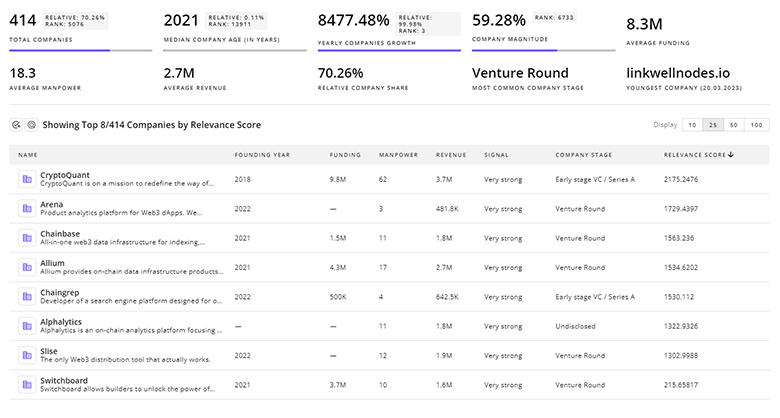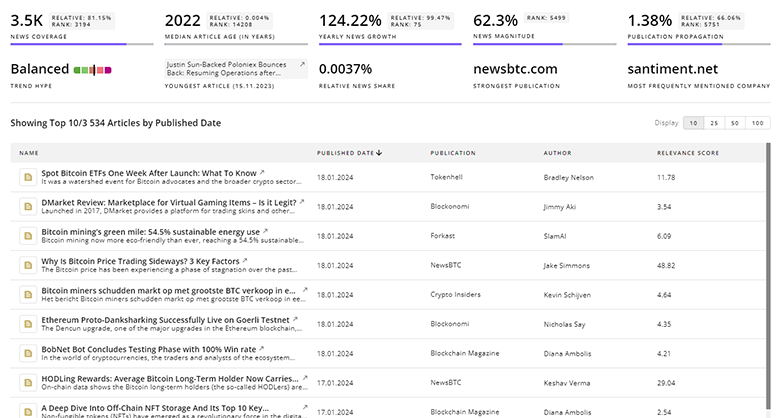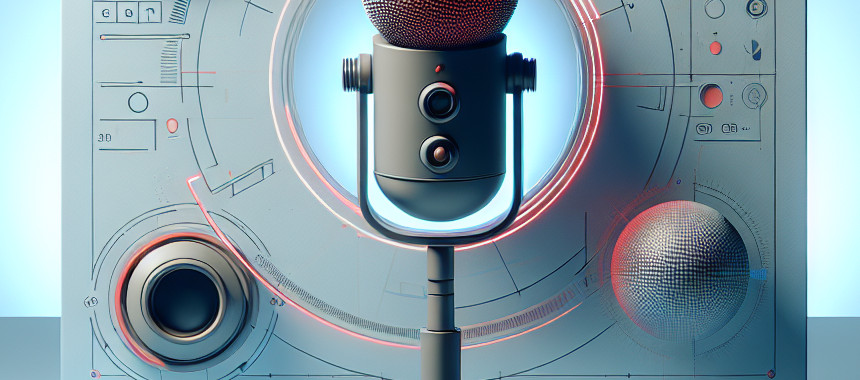
Assistive Technology Report
: Analysis on the Market, Trends, and TechnologiesThe assistive-technology market reached USD 26.8 billion in 2024 and is projected to expand on a multi-year trajectory (internal forecast CAGR 4.33%), reflecting steady demand for mobility, vision, hearing, and communication solutions and rapid adoption of AI-enabled features that raise product utility and recurring-service opportunities IMARC Group. The combination of demographic pressure (ageing populations), rising prevalence of sensory and mobility impairments, and widening corporate/government accessibility requirements creates a two-track opportunity: platform players that bundle device + cloud + services will capture durable share, while specialised technology suppliers (eye-tracking, BCI signal processing, haptics, low-cost vision aids) can monetize as indispensable components across multiple platforms.
This report was last updated 31 days ago. Spot an error or missing detail? Help us fix it by getting in touch!
Topic Dominance Index of Assistive Technology
To identify the Dominance Index of Assistive Technology in the Trend and Technology ecosystem, we look at 3 different time series: the timeline of published articles, founded companies, and global search.
Key Activities and Applications
- Augmentative and Alternative Communication (AAC): speech-generating devices, eye-gaze access, and clinician-integrated language systems for ALS, cerebral palsy, stroke, and autism; these remain a core clinical and educational application area Talk To Me Technologies.
- Mobility and rehabilitation: powered wheelchairs, modular exoskeleton components, and clinic-run robotic gait trainers that enable reimbursable therapy paths and remote monitoring NextStep Robotics.
- Vision and scene-description aids: wearable AI assistants, smart vests for navigation, object and currency recognition tools that convert visual input into audio or haptic outputs for independent navigation and transactions.
- Digital accessibility and web compliance: automated remediation, screen-reader improvements, and AI services that reduce developer effort to meet WCAG and ADA requirements, expanding reach of digital offerings to users with sensory or cognitive impairments accessiBe.
- Home-based assisted living and environmental control: IoT sensor networks, discrete activity sensors, and remote-support tablets used to enable ageing-in-place and remote care coordination SafeinHome.
- Cognitive and learning supports: adaptive tutoring, avatar-based learning for autistic users, and gamified therapy that increases adherence and measurable outcomes in special-education contexts Invirtua - Interactive Avatars for Autism.
Emergent Trends and Core Insights
- AI-driven personalization: AI and ML increasingly power on-device and cloud personalization (sound environments for hearing aids, context-aware navigation for vision aids, adaptive AAC vocabularies), converting single-function devices into learning products that improve with usage data.
- Wearables + embedded assistive platforms: shoulder-worn vests, smart glasses, and sensor garments shift functionality from fixed devices to always-on personal assistants, creating new recurring revenue opportunities via software subscriptions and data services.
- Robotics-as-a-Service and clinic deployment models: RaaS and leasing reduce capital barriers for clinics to deploy rehabilitation robotics and exoskeletons while accelerating data capture for outcome-based reimbursement.
- Platformization and ecosystem leverage: the market segments into ecosystem leaders (device + software + funding/clinical support) and "ingredient" specialists (BCI algorithms, haptic drivers, scene-description models) that license into many platforms; this dynamic will determine valuation premiums Tobii Dynavox.
- Affordability & emerging-market focus: startups that localize manufacturing, use low-cost sensors, or repurpose mainstream consumer hardware can reach large underserved populations in low- and middle-income countries, where current access rates for assistive products remain extremely low.
- Persistent equity gap as a growth lever: WHO data show very low assistive-product coverage in low-income countries; closing this gap will require new business models (rental, public procurement, NGO partnerships) that change unit economics for suppliers WHO.
Technologies and Methodologies
- Artificial Intelligence and Machine Learning: used for natural language, acoustic scene separation, computer vision for object/scene description, and predictive therapy adjustment.
- Eye-gaze, head-tracking, and precision access interfaces: mature control paths for users with severe motor impairment that enable AAC and device control with low training overhead EyeTech Digital Systems.
- Brain-computer interfaces (BCI): non-invasive EEG and advanced signal pipelines are moving toward practical communication and control for locked-in users; they remain nascent but high-impact when paired with lightweight, integrable software stacks Possibility Neurotechnologies.
- Haptics and multi-sensory feedback: high-resolution tactile arrays and wearable haptic drivers translate visual or spatial data into tactile language for people with visual impairments, improving situational awareness.
- Robotics and exoskeleton control: adaptive control systems, modular robotic arms, and gait trainers combine AI-driven assistance with clinic workflows and telemonitoring to scale rehabilitation throughput.
- IoT and cloud connectivity: sensor fusion, remote configuration, telemetry for outcomes reporting, and OTA updates create ongoing product improvement loops and support subscription pricing.
Assistive Technology Funding
A total of 467 Assistive Technology companies have received funding.
Overall, Assistive Technology companies have raised $6.0B.
Companies within the Assistive Technology domain have secured capital from 1.5K funding rounds.
The chart shows the funding trendline of Assistive Technology companies over the last 5 years
Assistive Technology Companies
- biped.ai — biped builds NOA, an AI navigation vest that provides GPS guidance, obstacle identification, and audio scene descriptions as a complement to canes and guide dogs; the product targets independent mobility for blind users and integrates lightweight sensors with real-time inference to minimize cognitive load while navigating complex environments.
- Lusio Rehab — Lusio commercializes LusioMATE, a gamified wearable sensor system that turns prescribed physical therapy into engaging exergames and allows clinicians to remotely monitor adherence and progress; this design improves long-term compliance and creates data assets for outcome validation and payer engagement.
- Kyaro Assistive Tech — Kyaro focuses on locally manufactured, low-cost mobility devices suited to East African contexts; the organization combines user-centred co-design with regional production to lower unit cost and shorten service cycles, addressing a pronounced access gap in sub-Saharan markets.
- BirgerMind — BirgerMind develops a portable, non-invasive BCI aimed at enabling communication for fully paralysed users; the company emphasizes ease of use, rapid setup, and integration with common communication applications, positioning its BCI as a licensable "ingredient" for larger AAC platforms.
Identify and analyze 3.3K innovators and key players in Assistive Technology more easily with this feature.

3.3K Assistive Technology Companies
Discover Assistive Technology Companies, their Funding, Manpower, Revenues, Stages, and much more
Assistive Technology Investors
TrendFeedr’s investors tool offers a detailed view of investment activities that align with specific trends and technologies. This tool features comprehensive data on 1.1K Assistive Technology investors, funding rounds, and investment trends, providing an overview of market dynamics.

1.1K Assistive Technology Investors
Discover Assistive Technology Investors, Funding Rounds, Invested Amounts, and Funding Growth
Assistive Technology News
Stay informed and ahead of the curve with TrendFeedr’s News feature, which provides access to 3.6K Assistive Technology articles. The tool is tailored for professionals seeking to understand the historical trajectory and current momentum of changing market trends.

3.6K Assistive Technology News Articles
Discover Latest Assistive Technology Articles, News Magnitude, Publication Propagation, Yearly Growth, and Strongest Publications
Executive Summary
The assistive-technology sector offers predictable, growing demand anchored in demographic change and mounting policy pressure for inclusion. The commercial contest will pivot on two capabilities: the ability to apply AI to generate measurable, personalized outcomes that justify service pricing, and the ability to integrate (or be integrable) into broader clinical, educational, and home-care ecosystems. For investors and operators, three practical priorities emerge: (1) target subsegments where reported submarket CAGRs exceed aggregate market growth (vision wearables, AAC software, clinic robotics), (2) adopt business models that convert one-time hardware sales into recurring service revenue (software, telemetry, managed services, RaaS), and (3) pursue partnerships or licensing strategies that position a company as an indispensable "ingredient" inside platform providers rather than competing head-on with established ecosystems. These moves will maximize capture of both near-term distribution gains and long-term value created by data-driven, personalized assistive solutions.
Interested in enhancing our coverage of trends and tech? We value insights from experts like you - reach out!










